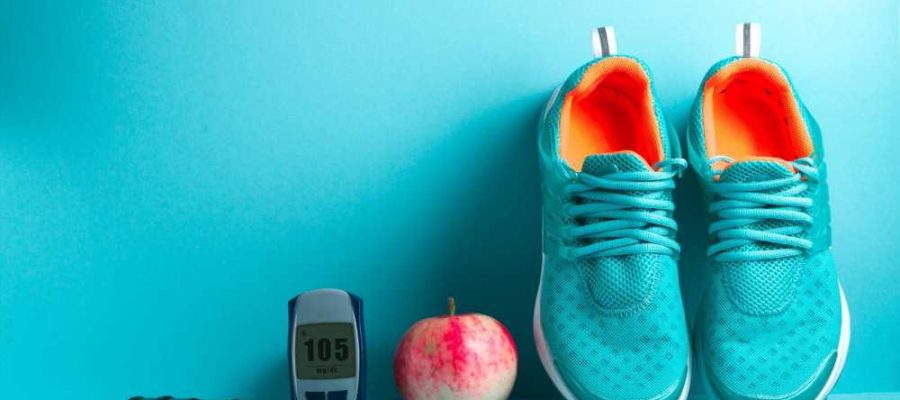
What are the minimal clinically important differences in the Diabetes Distress Scale–17 and its four subscales?
In a recent study published in JAMA Network Open, a group of researchers determined a distribution-based minimal clinically important difference (MCID) for the Diabetes Distress Scale–17 (DDS-17) and its four subscales.
 Study: Ascertainment of Minimal Clinically Important Differences in the Diabetes Distress Scale–17. Image Credit: goffkein.pro/Shutterstock.com
Study: Ascertainment of Minimal Clinically Important Differences in the Diabetes Distress Scale–17. Image Credit: goffkein.pro/Shutterstock.com
Background
Clinical trials indicate that lowering hemoglobin A1c (HbA1c) levels reduces morbidity and mortality in type 2 diabetes patients.
Managing this chronic condition demands patient involvement and treatment adherence, often leading to diabetes distress – emotional strain due to ongoing diabetes management challenges. Higher diabetes distress is linked to elevated HbA1c levels and poor glucose control.
The DDS-17 evaluates this distress, with higher scores indicating worse outcomes. Further research is needed to deepen the understanding and utility of the DDS-17 by identifying more detailed and clinically relevant change thresholds beyond standard cutpoints.
About the study
Conducted between July 2015 and June 2017, the present study adhered to the Consolidated Standards of Reporting Trials (CONSORT) guidelines. The trial included 280 participants with uncontrolled diabetes, diagnosed by a mean HbA1c level greater than 8.0%.
This secondary analysis of a randomized clinical trial (RCT), approved by the Department of Veterans Affairs (VA) central institutional review board, investigated the Empowering Patients in Chronic Care (EPICC) intervention's impact on patients with uncontrolled diabetes.
These participants were randomly assigned to either the EPICC or the enhanced usual care (EUC) group across VA primary care clinics in Illinois, Indiana, and Texas.
The EPICC group attended six bi-monthly sessions, supplemented by individual sessions focused on collaborative goal-setting and motivational interviewing. The trial primarily evaluated the clinical effectiveness of EPICC compared to EUC, where the EUC group received standard diabetes care, including educational materials and counseling.
Diabetes distress was assessed using the DDS-17, a measure with 17 items spread across four domains: regimen, interpersonal, physician, and emotional distress. A higher DDS-17 score indicates greater pain.
The analysis included calculating minimal clinically important differences (MCIDs) for the DDS-17 using a standard error of measurement method. Changes in DDS-17 scores were categorized as improvement, no change, or worsening.
The study also assessed the association between the treatment groups and changes in DDS-17 scores and between DDS-17 changes and HbA1c levels. Multilevel regression models were used, considering the variations across participants, cohorts, and sites. The study concluded in June 2023 after comprehensive data collection and analysis.
Study results
The study involved 248 participants who completed the DDS-17, with an average age of 67.4 years and a predominance of men (94.76%). The participants were nearly evenly split between the EPICC and EUC groups, and the sample was diverse, including 11.30% Hispanic, 37.90% non-Hispanic Black, and 48.79% non-Hispanic White individuals.
Most participants reported an annual income below $40,000 and had a college education. The 32 participants who did not complete post-intervention DDS-17 assessments were not significantly different in demographics or baseline characteristics from those who did.
The MCID for DDS-17 was calculated as 0.25, with subscale MCID values of 0.38 for emotional and interpersonal distress and 0.39 for physician and regimen distress. These MCID values captured a different degree of change than the traditional DDS-17 cutoff level 2.0.
Post-intervention, 41.53% of participants showed improvement, 23.79% worsened, and 34.68% showed no significant change in their DDS-17 scores. In contrast, when using the cutoff level of 2.0, fewer participants showed a meaningful change in their distress levels.
Regarding the treatment groups, participants in the EPICC cohort were more likely to show an MCID improvement in DDS-17 overall, specifically in the emotional distress and regimen distress subscales, compared to those in the EUC group.
Similarly, EPICC participants were less likely to experience worsening in overall DDS-17, regimen distress, and interpersonal distress scores. However, there was no significant relation between the treatment group and MCID improvement or worsening in the physician distress and interpersonal distress subscales.
When examining changes in HbA1c levels by DDS-17 MCID categories, it was found that the mean reduction in HbA1c was higher in the total DDS-17 MCID improvement category compared to the no-change and worsening categories.
However, there was no significant association between DDS-17 MCID improvement or worsening and changes in HbA1c scores. This result indicates that while the DDS-17 MCID values provide a better understanding of diabetes-related distress changes, they do not directly correlate with significant changes in HbA1c levels among the overall sample.
Conclusions
This study established MCID for the DDS-17 and its subscales, setting an MCID at 0.25 for DDS-17, 0.38 for emotional and interpersonal distress, and 0.39 for physician and regimen distress.
The research showed that participants in the EPICC intervention were more likely to improve and less likely to worsen in diabetes distress. However, no significant link was found between HbA1c levels and MCID changes in DDS-17 scores.
This first-of-its-kind calculation of MCID for DDS-17 offers a better approach to assessing diabetes distress changes, though significant HbA1c changes may require more than MCID-level improvements.
Banks J, Amspoker AB, Vaughan EM, et al. (2023) Ascertainment of Minimal Clinically Important Differences in the Diabetes Distress Scale–17: A Secondary Analysis of a Randomized Clinical Trial. JAMA Netw Open. doi:10.1001/jamanetworkopen.2023.42950. https://jamanetwork.com/journals/jamanetworkopen/fullarticle/2811873
Posted in: Medical Science News | Medical Research News | Medical Condition News
Tags: Chronic, Clinical Trial, Diabetes, Education, Glucose, HbA1c, Hemoglobin, Mortality, Pain, Primary Care, Research, Type 2 Diabetes, Veterans Affairs

Written by
Vijay Kumar Malesu
Vijay holds a Ph.D. in Biotechnology and possesses a deep passion for microbiology. His academic journey has allowed him to delve deeper into understanding the intricate world of microorganisms. Through his research and studies, he has gained expertise in various aspects of microbiology, which includes microbial genetics, microbial physiology, and microbial ecology. Vijay has six years of scientific research experience at renowned research institutes such as the Indian Council for Agricultural Research and KIIT University. He has worked on diverse projects in microbiology, biopolymers, and drug delivery. His contributions to these areas have provided him with a comprehensive understanding of the subject matter and the ability to tackle complex research challenges.